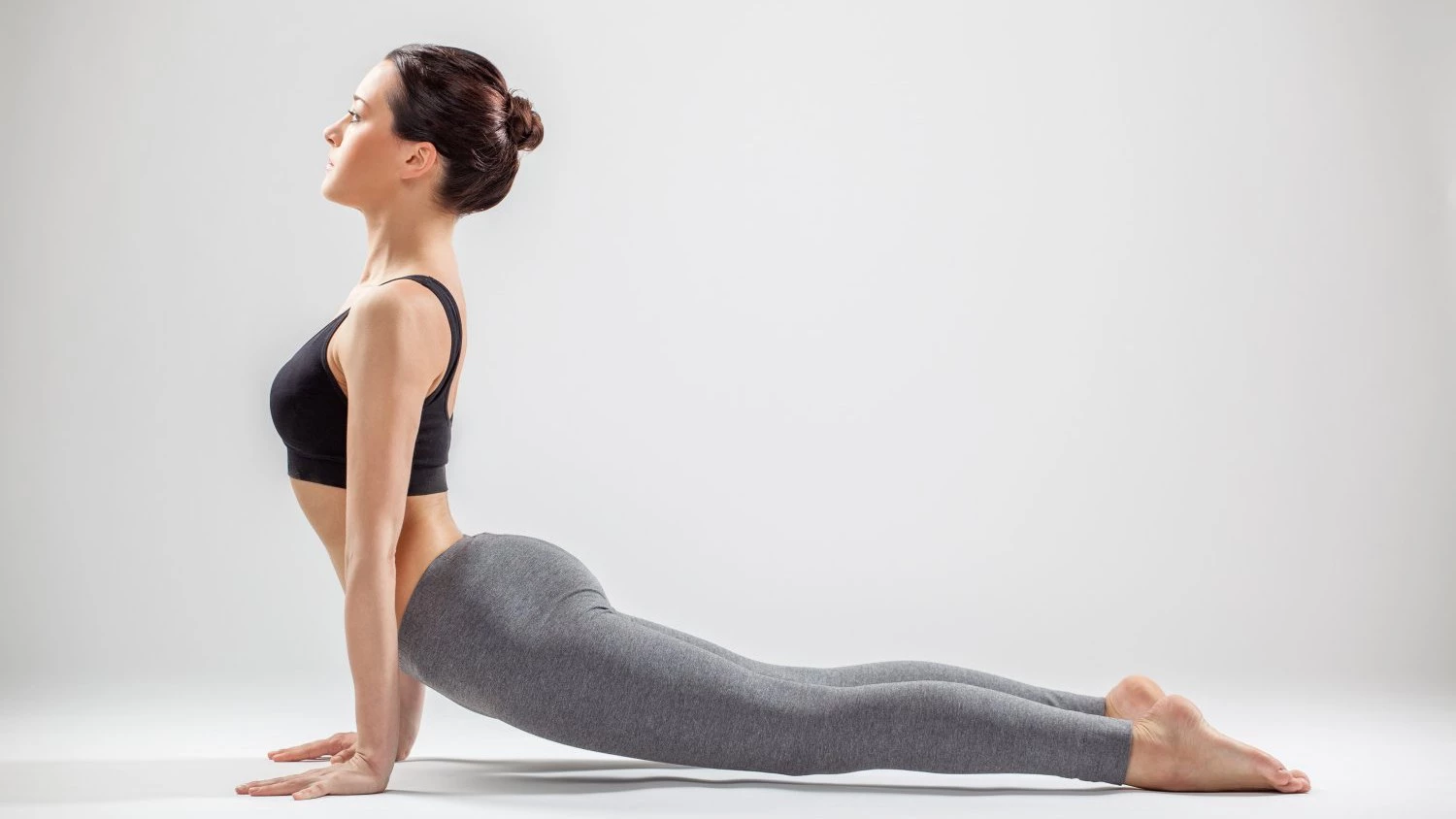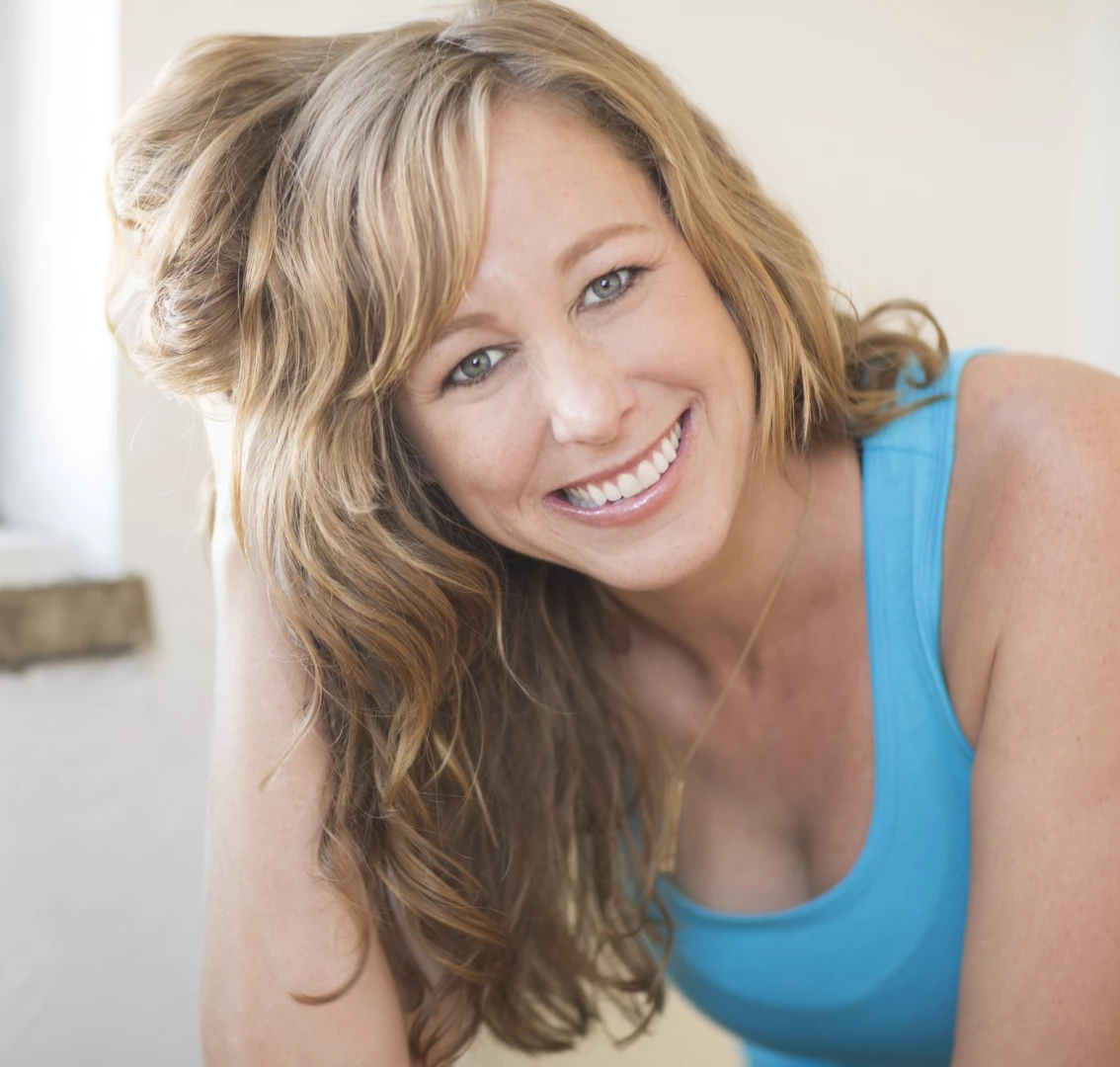Yoga Pose Primer: Upward Facing Dog Pose

An energetic pose that awakens the entire body, Urdva Mukha Svanasana (Upward Facing Dog) is a powerful backbend that strengthens the arms, shoulders, and back muscles, lengthens the spine, and opens the chest.
It’s worth taking a closer look at Upward Facing Dog, as it is one of the most common yoga poses (along with Downward-Facing Dog and Chaturanga Dandasana) in a Vinyasa yoga practice, repeatedly performed as you flow from side to side.
Getting Into Upward-Facing Dog Pose

- Lie on your stomach with your forehead down and the tops of your feet on the mat. Bend your elbows, place your hands alongside your rib cage, and drag your palms back toward your waist until your lower arms are relatively perpendicular to the floor.
- Actively reach back through the inner edges of your feet, flare your pinkie toes out to the sides, and press the tops of your feet down into the mat, engaging the muscles on all four sides of your legs.
- With your fingers spread, press down through the pads of your palm (keep the root of your index finger down) and lift your shoulder heads away from the floor, drawing your shoulder blades onto your upper back.
- On an inhalation, press down and slightly back through your palms as if you were trying to propel your body forward on the floor and begin to straighten your arms, simultaneously lifting your torso, hips, and legs off the floor.
- Keep pressing down through the tops of your feet, and firm your thighs without totally clenching your buttocks. Lift your pubic bone and low belly up, extending up through the crown of your head.
- Rotate your upper arm bones out and broaden across your collarbones. Firm your shoulder blades into the back ribs and lift through your sternum. Lengthen the back of your neck as you slightly turn your gaze up.
Common Misalignments in Upward-Facing Dog Pose
Most beginners in Upward-Facing Dog tend to focus solely on pushing the arms straight, jamming the lower back, and bringing the shoulders forward. Remember that your arms are not the only muscles working; your legs, back muscles, shoulders, and chest also need to be working.
Rather than pressing straight down into the palms and taking your torso straight up, drive back through your legs and pull your chest forward and through your arms, lengthening the spine forward and up. Keep pressing down through your palms and take your shoulder heads back, opening your heart and throat.
When students focus on pushing their arms down into the floor, they often lock their elbows, which also brings the shoulder heads forward. You have to keep working your arms. Start by spreading through your fingers, keeping the root of your index finger down, and pressing strongly into the pads of your palm. Fire up the muscles of your arm and rotate your upper arms out to the sides.
To protect your lower back, pull your core in and up, and try to avoid pushing the ribs forward as you bring your lift through your sternum.
Be careful not to drop your head back, creasing the back of your neck. Think about keeping your neck in line with the rest of your spine and the center of your ears in line with the tops of your shoulders.
Modifications and Transitions

It’s not an easy pose. Upward-Facing Dog can sometimes bother your lower back. Following the steps above should help, along with using your legs. To help with this and to keep the inner rotation of the thighs, squeeze a yoga block between your upper inner thighs, activating your adductor muscles and often relieving pressure on the lower back.
Initially, keeping the thighs lifted off the floor in Up Dog can be tough. Beginners can place a blanket roll at the top of their thighs, lightly resting their thighs on the roll as they actively lengthen their spine forward and up.
Upward-Facing Dog Pose is most commonly done following Chaturanga Dandasana without coming down to the floor. It is a difficult transition, with its own set of instructions, first practice coming all the way down to the mat and following the steps above to perform Up Dog.
 Meagan McCrary is an experienced yoga teacher (500 ERYT) and writer passionate about helping people find more comfort, clarity, compassion, and joy on the mat and in their lives. She is the author of Pick Your Yoga Practice: Exploring and Understanding Different Styles of Yoga a comprehensive encyclopedia of prominent yoga styles, including each system’s teaching methodology, elements of practice, philosophical and spiritual underpinnings, class structure, physical exertion and personal attention. Currently living in Los Angeles, Meagan teaches at the various Equinox Sports Clubs, works privately with clients, and leads retreats internationally. You can find her blog, teaching schedule, and latest offerings at www.MeaganMcCrary.com and on Facebook.
Meagan McCrary is an experienced yoga teacher (500 ERYT) and writer passionate about helping people find more comfort, clarity, compassion, and joy on the mat and in their lives. She is the author of Pick Your Yoga Practice: Exploring and Understanding Different Styles of Yoga a comprehensive encyclopedia of prominent yoga styles, including each system’s teaching methodology, elements of practice, philosophical and spiritual underpinnings, class structure, physical exertion and personal attention. Currently living in Los Angeles, Meagan teaches at the various Equinox Sports Clubs, works privately with clients, and leads retreats internationally. You can find her blog, teaching schedule, and latest offerings at www.MeaganMcCrary.com and on Facebook.



